No seriously, this post contains major spoilers for the ending of the Mass Effect trilogy. Consider yourself warned!
Hey all,
I hope you aren’t reading this if you intend to finish Mass Effect 3 unspoiled. Unless you have been under a proverbial rock (or an actual rock with no Internet access), you know that the endings of the game have left the thousands of fans up in arms. It is a rather sad turn of events because the series is so excellent right up to the last 5 minutes.
Let me break the game’s finale down for you.
(My Commander Shepard was female, so I’m going with female pronouns in this post. You can also play a dude.)
The Situation
Earth is being ransacked by the Reapers, a race of space-faring mechanical crustaceans of doom. They come around every 50,000 years to harvest the galaxy’s technologically advanced sentient life forms, converting the biomass into new Reapers and taking any useful technological developments with them to use against their enemies in the next cycle.
To save the world, Commander Shepard has rallied together the fleets of the galaxy’s sentient species, overcoming centuries of strife, hatred, and prejudice. The good guys have worked together to build a super-weapon from ancient designs known as the Crucible. However, in order to fire the weapon and destroy the Reapers, it needs to be connected to the Citadel, which up to this point in this story, has functioned as the United Nations of the galaxy. The fleet’s objectives are to kill off some of the Reapers and to protect the Crucible as it approaches the Citadel.
The Assault
Unfortunately, the Citadel is hovering over Earth in its closed and protected state, so Shepard must break into the Reaper-controlled teleportation station on Earth’s surface before the Crucible can be fired. If the alliance can get control of it then ground forces can assault the Citadel itself (via the magic beam of teleportation).
As Commander Shepard and her allies make for the Reaper controlled teleportation station that will allow them to directly assault the Citadel, multiple Reapers leave the battle with the fleets to land on the surface, blasting Shepard’s allies to dust. As Shepard approaches the teleportation beam, a Reaper’s laser strikes nearby and knocks her unconscious.
The Climax
Shepard awakes a broken mess, but close to the teleportation beam. She struggles to her feet and proceeds to limp forward, firing a pistol at enemies that are getting in the way. Light envelopes Shepard as she is transported to the Citadel. She finds herself in a grotesque mass of corpses, human and alien alike, but is driven to the control room by the voice of Admiral Anderson, who also made it up the teleportation beam, but who was teleported into a different starting room.
Anderson beats Shepard to the control room, but unfortunately the Illusive Man is also there (and he’s been Reaper-ified to boot). The Illusive Man claims that he has mastered the ability of indoctrination and proves his power by forcing Shepard to shoot Anderson in the stomach. Anderson and Shepard try to convince the Illusive Man that he has been indoctrinated by the Reapers, but he refuses and tries to execute Anderson. The scene is highly reminiscent of the final scene with Saren in the original Mass Effect.
Here Shepard has the option to shoot the Illusive Man and save Anderson. I chose to save him, though afterwards Anderson and a bloody Shepard sit and watch the space battle from the Citadel. Admiral Hackett alerts Shepard that the Crucible isn’t firing even though it is now connected to the Citadel, and that Shepard must trigger it somehow from inside. As Shepard attempts to get up, she falls back down to the floor, bleeding badly from wounds sustained on the ground.
A glowing platform lifts her up to another room on the Citadel.
The Choice
Shepard is confronted with the image of one I like to call the Starchild (aka Child aka Catalyst), a shimmering presence that names itself the commanding force behind the Reapers and takes the form of the small boy seen in the first engagement with the Reapers on Earth and who haunted Shepard’s dreams throughout the game. The Starchild explains to Shepard that the Reapers were created as a force of order in the galaxy, harvesting sentient life and storing it so that other life forms might evolve and grow.
Depending on the amount of fleet strength the player has accumulated throughout the game, Starchild will present up to three different choices on how Shepard can use the Crucible’s power.
- Destruction (red) – Destroy all synthetic life in the galaxy, including the Reapers, Geth, and (supposedly) Shepard herself
- Control (blue) – Take control of the Reapers, but die in the process
- Synthesis (green) – Add Shepard’s energy to the Crucible, merging all organic and synthetic life into new hybrid forms
Shepard makes a choice, dies, and the Reapers leave Earth (Blue & Green) or are destroyed (Red). The Crucible also fires at the Sol Mass Relay, destroying it and setting off a chain reaction that destroys all of the relays in the galaxy.
The Normandy is seen racing away from the resulting explosion, and then crash landing in a jungle on a far away world, with Joker and some other crew members getting out and looking dramatically into the planet’s sun.
Initial Reaction to the Climax
My first reaction was one of disorientation and confusion. Sure, I recognized that the tension between synthetic life and organic life is one of the themes in the game. The civilized races have a ban on developing artificial intelligences (strong AIs), and the Geth certainly have been problematic throughout the games (especially to their creators, the Quarians, who were wiped out in my playthrough).
But the main driving force of the story was the tension between the Reapers and, well, pretty much everyone else in the galaxy. It was an epic struggle for survival, not against machines in particular, but against forces beyond our control. It was the struggle of life versus death. The struggle to work through past grievances and overcome prejudices. The three endings seem to be ripped from Deus Ex, which, now that I think about it, they are. The Control ending also doesn’t make a lot of sense; how can Shepard control the Reapers if she is dead? The Synthesis ending also feels weird because it isn’t believable. If all organic life is infused with synthetic components, where do the components come from? And this ending reinforces the idea that synthetics and organic life forms are too different to get along, but these differences are never explored.
It made no sense to introduce a new character (Starchild) at the very end of the series as a kind of deity. It didn’t fit the lore. It didn’t fit the themes of the game. I don’t recall any discussion of a force leading the Reapers at all, and when Shepard questions Sovereign on Virmire about the Reapers’ motivations, Sovereign responds that their reasons are unfathomable. If it is so unfathomable, why did it take about three sentences from Starchild’s mouth to explain it? It just doesn’t make sense.
One thing that I do like very much about the ending is how the ending is somewhat ambiguous, and what I consider to be the “true” ending is only shown to the player if they beat the game with a sufficient strength and chose the Destruction ending. The “true” ending shows the standard Destruction ending, but then includes a short scene of Shepard’s body laying among concrete and miscellaneous rubble, and gasping for air in the final second, and then the credits roll.
WHAT?!
That was my response to this. It shows am important fact: that Shepard did not die as we thought she did when she activated the Crucible.
As in, she never actually made it to the Citadel, and is still alive on Earth. Which means…
Indoctrination Theory
I’ve come to believe that everything after the laser knocks Shepard unconscious is a fabrication, an illusion created by the Reapers in an attempt to indoctrinate Shepard. I think the evidence for this interpretation is overwhelming. Take your pick of the following points:
- When Shepard gasps at the last second, she is surrounded by the concrete of Earth construction, not the metallic/high-tech remains of the Citadel.
- Anderson reaches the console before Shepard even gets close to it, despite entering the beam after her.
- The scene with The Illusive Man and Admiral Anderson can be interpreted as representation of Shepard’s mind fighting off the indoctrination. One part of her psyche wants to fight on (Anderson), while the other is curious about the power of the Reapers (Illusive Man). When the confrontation with the Illusive Man fails to seduce Shepard, the Reaper doing the indoctrination tries something more subtle that may appeal to Shepard’s curiosity (of a possible co-existence with Reapers) and empathy (again, Starchild looks like the boy Shepard was unable to save).
- Some argue that the child in the opening sequence of the game (and who haunts Shepard’s dreams) is actually a hallucination by one of the Reapers on Earth. I don’t really buy this personally, but figured I’d throw it out there.
- The in-game Codex entry for indoctrination lists seeing of ‘ghostly figures’ as one of the symptoms. It also lists frequent headaches as a symptom, which Shepard mentions having at least a couple of times during the game.
- Shepard is breathing in what appears to be open space. It is possible some kind of force field is holding air in, but I don’t recall seeing anything like this prior to this sequence.
- Shepard’s pistol has unlimited ammunition after she has been knocked unconscious.
- Starchild begins the conversation with the line, “Wake up!”, a possible indication that someone is trying to revive Shepard in the “real world.” This is after Starchild has seen Shepard moving around.
- Starchild’s voice is augmented by 2 other voices: Female Shepard (left speaker channel) and Male Shepard (right speaker channel).
- Starchild tries to convince Shepard that the Destruction choice (resisting indoctrination) is pointless because, “Soon, your children will create synthetics and the chaos will come back.”
- Starchild instantly vanishes if Shepard chooses Destruction, as if it had no further need to exist, as the indoctrination attempt failed. Starchild hangs around if Shepard chooses Control, perhaps indicating a successful indoctrination attempt.
- The colors of the Destruction and Control are reversed from what one might expect. The Illusive Man, previously associated with Red (Renegade) options, is seen using the (Blue) Control machine, whereas Anderson, previously associated with Blue (Paragon) options, is seen shooting the (Red) Destruction machine. The Reaper is trying to trick Shepard into choosing the wrong option (i.e., non-Red).
- Attempting to control the Reapers (Blue) will not work if Shepard has been indoctrinated, as we learn from Starchild’s description of the Illusive Man: You cannot control that which is controlling you. Starchild goes on to say that Shepard is strong enough to control the Reapers, and appealing to Shepard’s ego.
- Synthesis (Green) of organisms and machines sounds a lot like becoming a Reaper to me. The Reapers, described as cybernetic organisms, already use bodies of their foes to create new Reapers.
Was it all a dream? I’d be happy to hear counter-arguments or other thoughts and interpretations of the ending. You can accept what Starchild is saying, but it feels inconsistent with the rest of the game, and I believe it will be revealed as farce at some point.
Indoctrination Theory is fun, but not satisfying
So cool, the last bit of the game can be interpreted as an elaborate twist in order to make the ending more interesting.
But then the game just ends. If the battle around Earth still rages, that means that Joker living happily-ever-after in the jungle hasn’t happened, so we know exactly nothing about what happened to anyone.
No one. That just doesn’t satisfy me. What happend to the Krogan after I cured the genophage? Is Earth able to rebuild? Have humans taken a suitable place in the galactic stage? None of these questions are answered. It’s not satisfying to know that the battle is still going on.
I’m okay with Shepard dying. In fact, it makes a lot of sense from a story perspective. Hell, I’m okay with just about everyone dying. At least let me know if the fleets I amassed made a difference in the battle.
And what makes me upset…
…is that I have a hunch that Bioware is going to release a “closure” DLC for $15 that will explain what happened to the various characters after the climax, or perhaps even re-write the climatic sequence altogether (which some individuals have called for).
None of my decisions throughout the game have a significant impact on the endings that I could tell. As far as I know, the amount of war assets and total combat readiness you have only opens up the three choices and potentially who survives at the very end of the game. Why not diverge the story in completely different directions before the climatic scene? Not too much, just a mission or perhaps two.
I will give it to Bioware that they chose to end the series with a player choice; this has been a central theme for all of the games. However, picking among doors A, B, and C cheapens the entire experience because little the player does affects what lies behind those doors.
Cheers,
S
P.S. Also, WTF the Citadel can move?
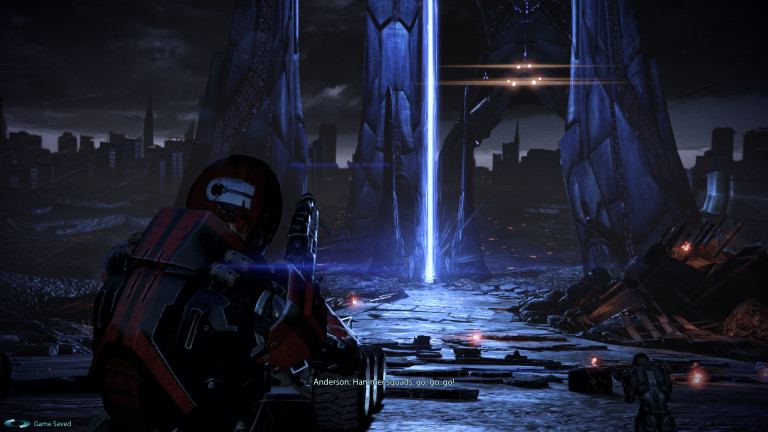
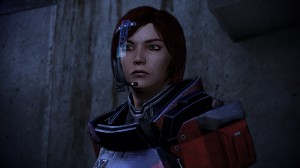
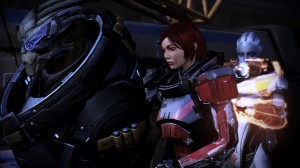
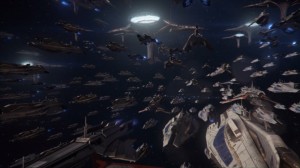
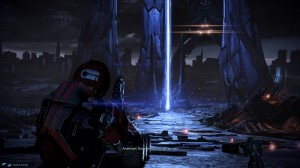

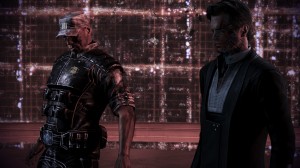
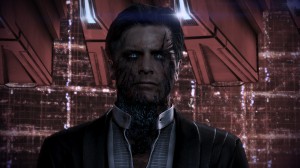

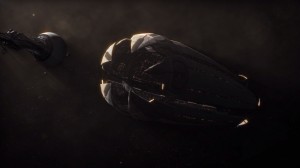
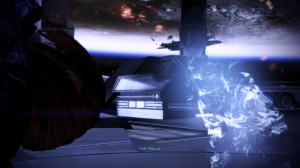
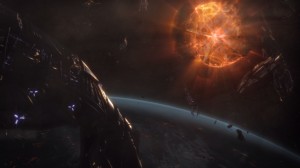
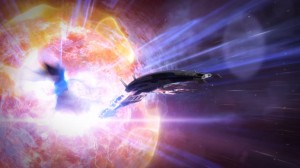
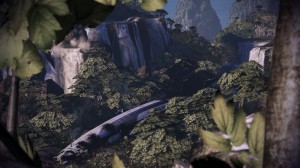

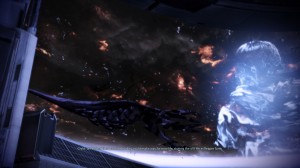
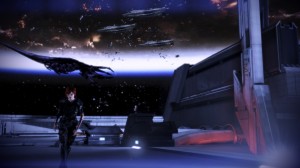
Comments
Avery said: 25 March 2012 at 19:28
I totally love this, and I totally agree. I chose to destroy the Reapers as they were an abomination and deserved to die, as Anderson was doing the right thing and so did my Shepard. I believe that it ended well, but we are left with so many un-answered questions, and I’m glad my Shepard didn’t die, but at the same time I am not, because if he died, I kinda expected it, but at the same time no. I love how he came back to life, the game was all good, but I wan’t to know what happen to everyone. I cried at the end, and I didn’t expect and ending like this at all.
Sunhawk said: 25 March 2012 at 23:44
Hi Avery,
I agree with your comment about Shepard’s death: I was okay with Shepard either dying heroically or not dying, but either way just tell me if the sacrifice was worth it! I liked that there was the indoctrination twist at the end, but I really wanted some more closure to the story.
I think the whole ending sequence came out of left-field, so much so that I was a little surprised by it.
Thanks for the input and thanks for reading! 😀
Avery said: 20 July 2012 at 04:55
Hi, Avery again. The Extended Cuts of the game came out, and I needed to come back to this. I love your theory. The Indoctrination makes complete sense, for my extended ending, I chose the green. Which I thought was very stupid, and is complete garbage, because it seems to me everyone is controlled and is the same. Though, I restarted again, and chose not to make any decisions, but than everyone died, and so Liara left a message saying that they failed. Though, Then I thought, hm, I’ll choose Paragon when I’m female, because with MY male Shepard I have now, I want to choose what I want. I want the Repears gone, as they are an abomination, and are disgusting creatures that should be abolished. My Extended Cut was alright, but I was sad to see EDI die because all synthetic life died if you chose to destroy Reapers, but with the Reapers dead in our planet, I thought maybe when the (if) the reapers come back, we can use their powers against them, and save earth. I also agree, that Paragon is the right decision. This game reflects on your choices, and the ending(s) didn’t really clarify how your decisions decided the end of your game. But the paragon ending shows that, Shepard was really just indoctrinated, by the starchild and told to release the Reapers from destroying earth. Overall though, Bioware has created an Epic Film/Game I love the Mass Effect universe so much, Thanks for this by the way, I love your theory.